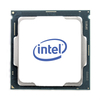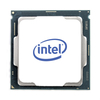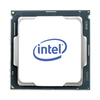-
Home
-
Contributors
-
International
-
Account
-
Information
More From Contributor
- 70 &176;CMaximum operating temperature 70 &176;COperating vibration 2.17 GNon-operating vibration 3.13 GOperating shock 1000 GNon-operating shock 1000 GWidth 22 mm Depth 80 mm Weight 10 g Temperature monitoring & logging N Operating / non-operating shock 1000 GLaunch date Q3'18 Random write (8GB span)220000 IOPSSSD power consumption (idle)0.040 W Sequential reading 1800 MB/s Sequential writing speed 1800 MB/s Status Launched Random read (8GB span)150000 IOPSProduct codename Neptune Harbor ...
- 70 &176;CMaximum operating temperature 70 &176;COperating vibration 2.17 GNon-operating vibration 3.13 GOperating shock 1000 GNon-operating shock 1000 GWidth 22 mm Depth 80 mm Weight 10 g Temperature monitoring & logging N Operating / non-operating shock 1000 GLaunch date Q3'18 Random write (8GB span)220000 IOPSSSD power consumption (idle)0.040 W Sequential reading 1800 MB/s Sequential writing speed 1800 MB/s Status Launched Random read (8GB span)150000 IOPSProduct codename Neptune Harbor ...
- 70 &176;CMaximum operating temperature 70 &176;COperating vibration 2.17 GNon-operating vibration 3.13 GOperating shock 1000 GNon-operating shock 1000 GWidth 22 mm Depth 80 mm Weight 10 g Temperature monitoring & logging N Operating / non-operating shock 1000 GLaunch date Q3'18 Random write (8GB span)220000 IOPSSSD power consumption (idle)0.040 W Sequential reading 1800 MB/s Sequential writing speed 1800 MB/s Status Launched Random read (8GB span)220000 IOPSProduct codename Neptune Harbor ...
- 70 &176;CMaximum operating temperature 70 &176;COperating vibration 2.17 GNon-operating vibration 3.13 GOperating shock 1000 GNon-operating shock 1000 GWidth 22 mm Depth 80 mm Weight 10 g Temperature monitoring & logging N Operating / non-operating shock 1000 GLaunch date Q3'18 Random write (8GB span)220000 IOPSSSD power consumption (idle)0.040 W Sequential reading 1800 MB/s Sequential writing speed 1800 MB/s Status Launched Random read (8GB span)220000 IOPSProduct codename Neptune Harbor ...
- 70 &176;CMaximum operating temperature 70 &176;COperating vibration 2.17 GNon-operating vibration 3.13 GOperating shock 1000 GNon-operating shock 1000 GWidth 22 mm Depth 80 mm Weight 10 g Temperature monitoring & logging N Operating / non-operating shock 1000 GLaunch date 03'18 Random write (8GB span)220000 IOPSSSD power consumption (idle)0.040 W Sequential reading 1500 MB/s Sequential writing speed 1000 MB/s Status Launched Random read (8GB span)90000 IOPSProduct codename Neptune Harbor ...
Intel Consumer SSDPEKNW512G8X1 Internal Solid State Drive M.2 512 GB
PCI Express 3.0 3D2 QLC NVMe
QLCNVMeYComponent forServer/workstationHardware encryptionYNVMe version3.0Security algorithms256-bit AESPCI Express interface data lanesx4End-to-End Data ProtectionYEnhanced Power Loss Data Protection technologyNSSD temperature monitoringNUncorrectable Bit Error Rate (UBER)Mean time between failures (MTBF)1600000 hTBW rating100Market segmentMBLSSD ARK ID149405Harmonized System (HS) code8471706000Power consumption (read)0.1 WPower consumption (write)0.1 WPower consumption (idle)0.04 WIntel High Endurance Technology (HET)NIntel&174; Rapid Start TechnologyYIntel&174; Remote Secure EraseNIntel&174; Smart Response TechnologyYOperating temperature (T-T)0 - 70 &176;CMaximum operating temperature70 &176;COperating vibration2.17 GNon-operating vibration3.13 GOperating shock1000 GNon-operating
shock1000 GWidth22 mmDepth80 mmWeight10 gTemperature monitoring and loggingNOperating / non-operating shock1000 GLaunch date03'18Random write (8GB span)220000 IOPSSSD power consumption (idle)0.040WSequential reading1500 MB/sSequential writing speed1000 MB/sStatusLaunchedRandom read (8GB span)90000 IOPSProduct codenameNeptune Harbor
- External links may include paid for promotion
- Availability: In Stock
- Supplier: Transparent Communications
- SKU: 4589018
Product Description
Intel&174; Smart Response Technology\n\n Intel&174; Smart Response Technology combines the fast performance of a small solid state drive with the large capacity of a hard disk drive.\n\n Hardware Encryption\n\n Hardware encryption is data encryption done at the drive level. This is used to ensure that the data stored on the drive is secured from unwanted intrusion.\n\n End-to-End Data Protection\n\n End-to-End Data Protection ensures integrity of stored data from the computer to the SSD & back.\n\n Intel&174; Rapid Start Technology\n\n Intel&174; Rapid Start Technology allows quick system resumes from the hibernate state.\n\n- 512 GB Capacity\n- M.2 22 x 80mm Form Factor\n- PCIe NVMe 3.0 x 4 Interface Feature Feature Value SSD form factor M.2SSD capacity 512 GBInterface PCI Express 3.0 Memory type 3D2 QLCNVMe Y Component for Server/workstation Hardware encryption YNVMe version 3.0 Security algorithms 256-bit AESPCI Express interface data lanesx 4 End-to-End Data Protection Y Enhanced Power Loss Data Protection technology NSSD temperature monitoring N Uncorrectable Bit Error Rate (UBER) Mean time between failures (MTBF)1600000 h TBW rating 100 Market segment MBLSSD ARK ID149405 Harmonized System (HS) code 8471706000 Power consumption (read)0.1 WPower consumption (write)0.1 WPower consumption (idle)0.04 WIntel High Endurance Technology (HET)NIntel&174; Rapid Start Technology Y Intel&174; Remote Secure Erase N Intel&174; Smart Response Technology Y Operating temperature (T-T)0
- 70 &176;CMaximum operating temperature 70 &176;COperating vibration 2.17 GNon-operating vibration 3.13 GOperating shock 1000 GNon-operating shock 1000 GWidth 22 mm Depth 80 mm Weight 10 g Temperature monitoring & logging N Operating / non-operating shock 1000 GLaunch date 03'18 Random write (8GB span)220000 IOPSSSD power consumption (idle)0.040 W Sequential reading 1500 MB/s Sequential writing speed 1000 MB/s Status Launched Random read (8GB span)90000 IOPSProduct codename Neptune Harbor
Reviews/Comments
Add New
Intelligent Comparison
Price History
We couldn't find any historical pricing!
Vouchers
Do you know a voucher code for this product or supplier? Add it to Insights for others to use.


 United Kingdom
United Kingdom
 France
France
 Germany
Germany
 Netherlands
Netherlands
 Sweden
Sweden
 USA
USA
 Italy
Italy
 Spain
Spain






















 Denmark
Denmark